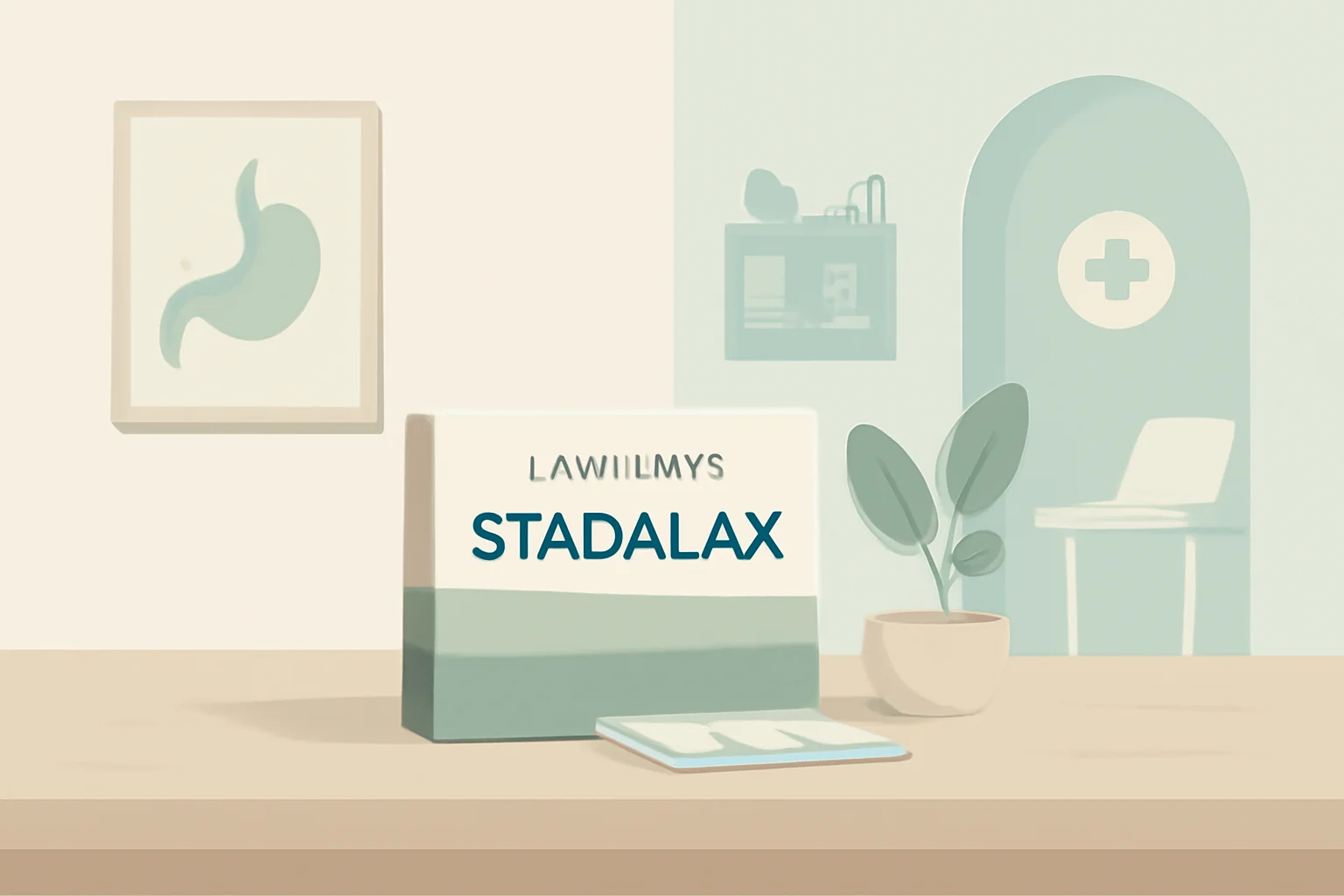
The effects and usage recommendations of Stadalax and other laxatives
Constipation is a common problem in people’s lives that often comes with discomfort. Changes in the rhythm of bowel movements, hardening of stools, or difficulty in bowel evacuation are all symptoms that many experience. Lifestyle, diet, stress, and various health conditions can all affect the functioning of the digestive system. To maintain proper bowel movements, many seek solutions such as medications, dietary supplements, or natural methods.
Among the many products available on the market, laxatives and Stadalax are particularly popular. These preparations can help relieve constipation, but it’s important to understand the differences between them, as well as the mechanisms of action and usage of each. People often look for reliable sources to learn about the best options that can help address their issues. Below, we will take a closer look at these products and discuss when it is advisable to use them.
What is a laxative?
Laxatives are medications designed to stimulate bowel movements and soften stools. These preparations can be found in various forms, including tablets, powders, and drops. The mechanism of action of laxatives generally relies on their effect on the muscles of the intestinal wall, promoting bowel movements. There are different types, such as osmotic, irritant, or bulk-forming laxatives.
Osmotic laxatives, such as polyethylene glycol, increase the contents of the bowel through their water-retaining effect, thereby aiding in stool softening. Irritant laxatives, like bisacodyl, act on the muscles of the intestinal wall, promoting increased bowel activity. Bulk-forming laxatives, such as psyllium, increase the bulk of stool, which also contributes to enhanced bowel movements.
It’s important to note that the use of laxatives is not always advisable. Long-term use can lead to dependency and disrupt the natural functioning of the intestines. Therefore, if someone suffers from chronic constipation, it’s worth consulting a specialist to determine the cause of the problems and find the most suitable treatment method.
The effects and use of Stadalax
Stadalax is a specific type of laxative designed to stimulate bowel movements. Its main active ingredient is bisacodyl, which irritates the muscles of the intestinal wall, facilitating the passage of stool through the digestive tract. Stadalax acts quickly, usually achieving the desired effect within 6-12 hours after ingestion, making it ideal for acute constipation.
When using Stadalax, it’s important to consider the appropriate dosage. It is advisable to start taking the preparation based on a doctor’s recommendation, as excessive or improper use can lead to harmful effects in the long run. Special attention should be given to children and pregnant women, as the use of laxatives is not always safe for them.
The advantage of Stadalax is that it acts quickly, but its effectiveness can vary from person to person. Some individuals may feel relief quickly, while others may require more time. Those with sensitive digestive systems should use it cautiously, as the irritant effect may cause unpleasant side effects, such as abdominal cramps or diarrhea.
It’s important to mention that Stadalax is not suitable for the long-term treatment of constipation. If someone regularly experiences constipation, it’s recommended to change their diet and lifestyle, as well as seek medical assistance.
Differences between laxatives and Stadalax
Laxatives encompass a wide range of products, and Stadalax is just one among many. The main difference lies in their mechanisms of action and methods of use. While laxatives generally have various effects, Stadalax specifically has an irritant effect that induces rapid bowel movements.
Among laxatives, there are both natural and synthetic preparations. Natural laxatives, such as psyllium, flaxseed, or prunes, are intended to support the natural flora of the intestines and can be used long-term. In contrast, Stadalax and similar irritant laxatives offer more short-term solutions and are not recommended for prolonged use.
Additionally, the side effects of laxatives can vary. While natural laxatives generally have fewer side effects, abdominal cramps and diarrhea are common with Stadalax and similar preparations. Therefore, when selecting the appropriate laxative, it is crucial to consider personal health status, potential side effects, and the underlying causes of constipation.
It is advisable to consult a doctor when making a decision to find the most suitable solution. Chronic constipation often has underlying organic or functional problems that need to be addressed before using laxatives.
Natural alternatives for constipation
In addition to laxatives and Stadalax, there are numerous natural alternatives for treating constipation. Changes in lifestyle and diet can significantly impact bowel movements. Adequate fiber intake, proper hydration, and regular physical activity can all contribute to maintaining digestive health.
Fibers, such as those found in vegetables, fruits, whole grains, and legumes, are rich sources that can help soften stools and stimulate bowel movements. The daily recommended fiber intake for adults is 25-30 grams, so it is worth paying attention to dietary choices.
Hydration is also a key factor. Water, fruit juices, and herbal teas can help soften stools, making bowel evacuation easier. It is recommended to consume at least 2 liters of fluid daily, especially when following a fiber-rich diet.
Exercise also plays an important role in maintaining digestive health. Regular physical activity stimulates bowel movements, thereby reducing the risk of constipation. An active lifestyle, even in the form of a daily 30-minute walk, can bring significant changes.
For those seeking natural methods, trying probiotics can also be beneficial, as they can help restore the balance of intestinal flora. Yogurts, kefirs, and other fermented foods are good sources of beneficial bacteria that support digestive function.
Overall, treating constipation can often be achieved through lifestyle changes, and prioritizing natural methods can reduce the need for medications.
**Warning:** This article does not constitute medical advice. Always consult a doctor for health issues and follow medical recommendations.

